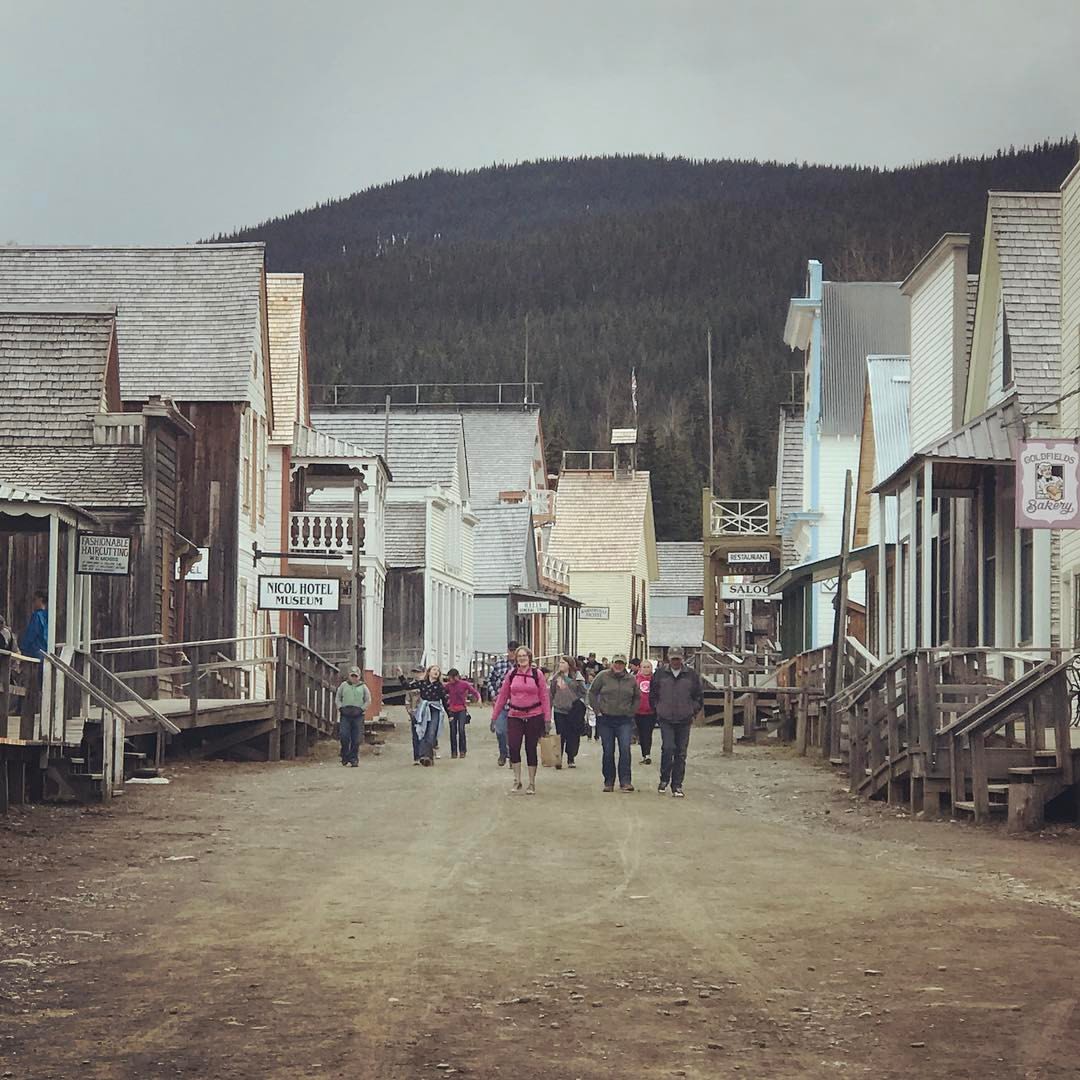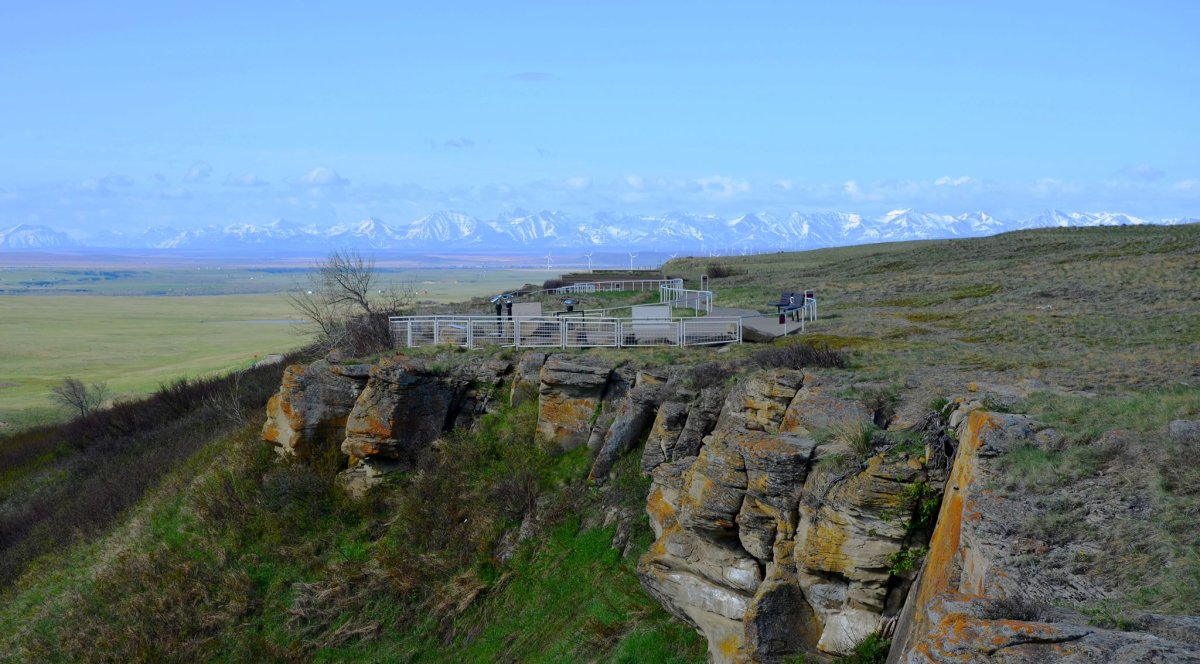Canada has sprouted some unique towns in 150 years.

It has one community where goats roam on the roof of a country market; a city named after a character from a science-fiction novel; and a hamlet whose main claim to fame is that the prime minister once visited for Canada Day.
If a road trip is in your plans for Canada’s 150th birthday, a visit to any one of these places, and many more, is sure to make one satisfying check mark on any bucket list.
Here are 10 quirky Canadian places to check out for Canada’s 150th birthday:
Dawson City, Yukon
Dawson City was once the epicentre of the Klondike Gold Rush. And from a brief glance at the place, it hasn’t changed too much since then.
Historic buildings still look the way they did to prospectors who were seeking gold in the 19th century.
You can take a walking tour with a costumed guide, who will tell you stories about the “colourful characters” who populated the town, when people flocked there seeking their fortunes.
Coombs, B.C.
A fun stop along the Alberni Highway on Vancouver Island, Coombs’ most notable feature is the Old Country Market, where you can buy groceries, souvenirs, and even enjoy lunch while goats hover over you.
That’s right. The Old Country Market in Coombs is most famous for goats that roam on the roof, starting in the spring. They were first placed there as a way to trim the grass on the market’s sod roof, and they’ve been a fixture there for over three decades.
It’s a great place for drivers to stop on their way to the resort town of Tofino, on Vancouver Island’s west side.
Barkerville, B.C.
While buildings in Dawson City have maintained their historic character, Barkerville, in B.C.’s central interior, is known as western North America’s “largest living-history museum.”
The town sprang up in the mid-1800s, when prospectors started hearing word of “easy gold” that could be found on the Fraser River, according to Barkerville’s website.
A town named “Richfield” gradually grew as miners sought gold in the hills of the central interior. Eventually, a man named William “Billy” Barker struck gold at a site in an area below the town.

Get breaking National news
It was eventually renamed “Barkerville” and today, it’s a National Historic Site of Canada where visitors can walk through 107 heritage buildings that maintain the air of a gold rush town.
Vulcan, Alta.
At least one Canadian town has been named after a figure from science fiction; it’s just not this one.
Vulcan is named after the Roman god of fire, and it was so named by a surveyor with Canadian Pacific Railway (CPR) who was a fan of mythology.
But the town has nevertheless come to embrace its Star Trek associations. It once housed a museum based on the sci-fi franchise, though it was later moved to Drumheller.
Today, it still houses a Star Trek-themed visitors’ centre and a replica of the Starship Enterprise from the film Star Trek V: The Final Frontier.
Leonard Nimoy, who played the Vulcan Mr. Spock on the series, visited the town in April 2010.
Head-Smashed-In Buffalo Jump, Alta.
Not a town so much as a historic site, Head-Smashed-In Buffalo Jump is a place “where the foothills of the Rocky Mountains meet the Great Plains.”
It’s also a place where the indigenous Plains People hunted bison by chasing them off a cliff so they could take their meat, according to the Government of Alberta.
Today, you can hike beneath the cliff and see the grounds where the Plains People once hunted. You can also see exhibits that tell the history of buffalo hunting.
Flin Flon, Man.
Unlike Vulcan, Alta., Flin Flon, Man. actually is named after a science-fiction character.
The book The Sunless City tells the story of Josiah Flintabbatey Flonatin, an explorer who took a submarine to the centre of the Earth via a river that flowed from Lake Avernus in the Rocky Mountains. There, he found a whole civilization.
Prospector Tom Creighton, who was one of two men who discovered the area’s copper-zinc ore body, found the book while exploring the region; the story reminded him and his party of how the lake close to their discovery looked like it was bottomless.
A statue of Flonatin stands at Flin Flon’s entrance.
Punkeydoodles Corners, Ont.

The signs in Punkeydoodles Corners are so often stolen, it’s tough to know where you are when you arrive there.
There is one sign that never leaves, however — it’s a monument that testifies to the visit of former prime minister Joe Clark, who spent Canada Day in the little hamlet close to Stratford in 1982.
How Punkeydoodles Corners arrived at such a notable name isn’t exactly settled as a matter of history.
There are a number of stories explaining how it happened, according to the Oxford County Library.
One of them tells of a German innkeeper who mispronounced the words to “Yankee Doodle.” Another suggests “punkeydoodle” is a Victorian word that means to waste time.
Saint-Louis-du-Ha! Ha!, Que.
The signs pointing you to Saint-Louis-du-Ha! Ha! are among the little town’s biggest attractions.
Like Punkeydoodles Corners, there are numerous stories explaining the name.
Town residents have suggested that French trappers said “Ha! Ha!” when they arrived there and marveled at its beauty, Conde Nast Traveler reported.
Another explanation is that a “ha-ha” describes an obstacle. In this town’s case, it might describe Lake Témiscouata, which has reportedly given travellers plenty of trouble over the years.
Blow Me Down Provincial Park, N.L.

In a province where communities have names like Come by Chance and Heart’s Content, Blow Me Down still stands out.
If you ask a nearby resident, the name describes the powerful winds that can come from all directions, according to a 2015 video by Newfoundland and Labrador Tourism.
There’s a story about a man who was sailing around the world once and decided to make his last stop in Blow Me Down. When he arrived, his boat looked like “Freddy Krueger and Wolverine got into a fight on the sails and then decided they might as well trash the rest of the boat.”
For those willing to brave the winds, Blow Me Down Provincial Park offers opportunities for camping, picnics and walks.
Shag Harbour, N.S.
Oct. 4, 1967.
The RCMP had been called to attend a report about a plane crash. They found something much stranger, according to Library and Archives Canada.
A flying object that measured about 18 metres long moved eastward before it fell into the waters of Shag Harbour, creating a “single white light” that emitted from beneath the surface once it went under, according to witnesses.
That incident has become a defining moment in the community’s history. In Shag Harbour, you’ll find an interpretive centre that tells the story of the UFO sighting. There are newspaper stories, documentaries and much more.
There’s also an annual UFO festival, which runs this year from Sept. 29 to Oct. 4.
(Infographic photo credits: Darryl Dyck, Chad Hipolito, Jeff McIntosh, Adrian Wyld/CP; Newfoundland and Labrador Tourism; Flickr user Bowserj, Attribution-NoDerivs 2.0 Generic (CC BY-ND 2.0)






















Comments